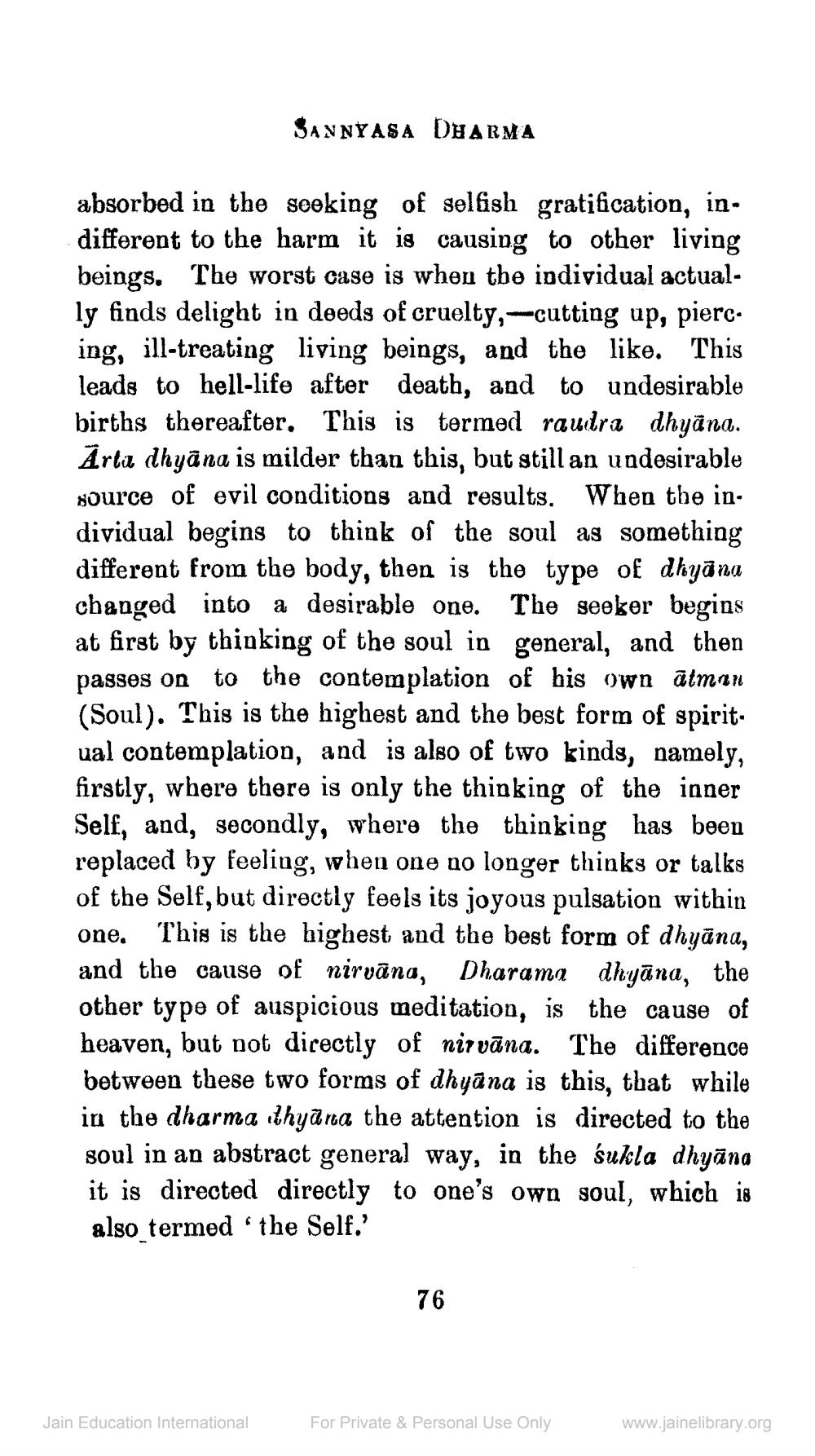________________
SANNYASA DHARMA
absorbed in the seeking of selfsh gratification, indifferent to the harm it is causing to other living beings. The worst case is when the individual actually finds delight in deeds of cruelty, --cutting up, piercing, ill-treating living beings, and the like. This leads to hell-life after death, and to undesirable births thereafter. This is termed raulra dhyāna. Ärta dhyāna is milder than this, but still an undesirable source of evil conditions and results. When the individual begins to think of the soul as something different from the body, then is the type of dkyāna changed into a desirable one. The seeker begins at first by thinking of the soul in general, and then passes on to the contemplation of his own atman (Soul). This is the highest and the best form of spirit. ual contemplation, and is also of two kinds, namely, firstly, where there is only the thinking of the inner Self, and, secondly, where the thinking has been replaced by feeling, when one no longer thinks or talks of the Self, but directly feels its joyous pulsation within one. This is the highest and the best form of dhyāna, and the cause of nirvana, Dharama dhyāna, the other type of auspicious meditation, is the cause of heaven, but not dicectly of nirvāna. The difference between these two forms of dhyāna is this, that while in the dharma Ihyana the attention is directed to the soul in an abstract general way, in the sukla dhyāna it is directed directly to one's own soul, which is also termed the Self.'
76
Jain Education International
For Private & Personal Use Only
www.jainelibrary.org




